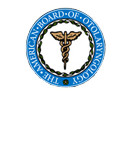Can Springtime Allergies Turn into Sinusitis?
Springtime allergies, due to characteristic blooming flowers and pollen-filled air, can transform the joys of the season into a nightmare for many individuals. While allergies are often associated with sneezing, itchy eyes and nasal congestion, they can also lead to more severe complications, such as sinusitis.
What Is Sinusitis?
Sinusitis, commonly known as a sinus infection, occurs when the cavities around the nasal passages become inflamed and swollen. This inflammation can be triggered by various factors, including viral or bacterial infections, but allergies play a significant role in exacerbating sinusitis symptoms during the springtime.
How Allergies Can Evolve into Sinusitis
When an individual with allergies is exposed to allergens such as pollen, their immune system goes into overdrive, producing antibodies called immunoglobulin E (IgE). These antibodies trigger the release of histamine and other chemicals, leading to the classic symptoms of allergic reactions. Inflammation of the nasal passages and sinuses is a common response to allergen exposure, which can create an environment conducive to the development of sinusitis.
One way in which springtime allergies can contribute to sinusitis is through prolonged exposure to allergens. As individuals spend more time outdoors during the spring, they are continually exposed to pollen, increasing the likelihood of allergic reactions. Persistent exposure to allergens can lead to chronic inflammation of the nasal passages and sinuses, making the individual more susceptible to developing sinusitis.
The common symptoms of allergies, such as nasal congestion and a runny nose, can create the perfect breeding ground for bacterial growth. The buildup of mucus in the sinuses provides an ideal environment for bacteria to thrive, leading to a secondary bacterial sinus infection. In some cases, fungal infections may also occur, particularly in individuals with compromised immune systems or pre-existing sinus conditions.
Recognizing Sinusitis Symptoms
The overlap in symptoms between springtime allergies and sinusitis can make it challenging to differentiate between the two conditions. Both conditions can cause nasal congestion, facial pain or pressure, headache, and postnasal drip. However, sinusitis often presents with additional symptoms such as fever, thick nasal discharge and tooth pain.
If springtime allergies are left untreated or poorly managed, they can exacerbate existing sinusitis or even trigger new episodes of sinus infections. Therefore, it is essential for individuals with allergies to take proactive measures to control their symptoms, such as avoiding allergen exposure, using nasal saline rinses to clear nasal passages, and taking allergy medications as prescribed by a healthcare provider.
In addition to managing allergy symptoms, practicing good sinus hygiene can help prevent sinusitis. This includes staying hydrated, using a humidifier to moisten the air and avoiding irritants such as cigarette smoke and strong chemicals. In some cases, nasal corticosteroids or decongestants may be prescribed to reduce inflammation and alleviate sinus pressure.
Treatment for Sinusitis
While springtime allergies may seem like a mere inconvenience, they can escalate into more serious sinusitis if left untreated. If your springtime allergies lead to sinusitis, do not wait to seek treatment. Contact our team at New York Sinusitis Treatment to schedule a sinusitis evaluation to explore treatment options.














